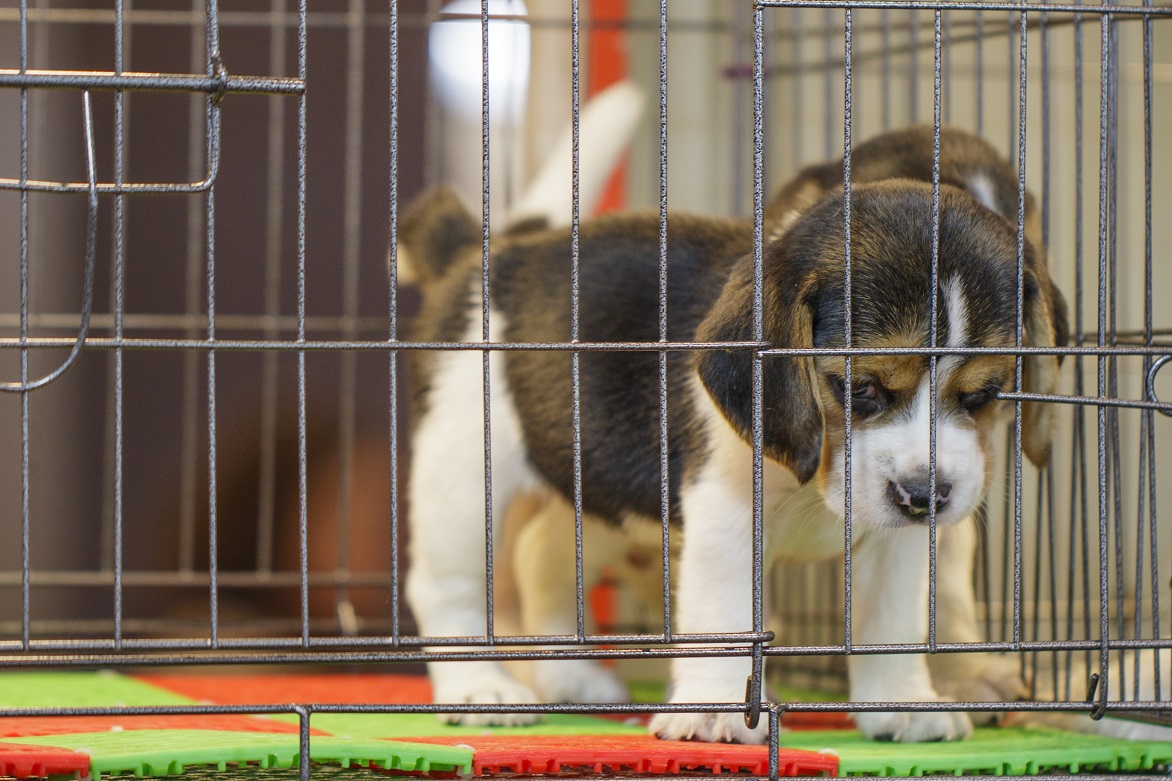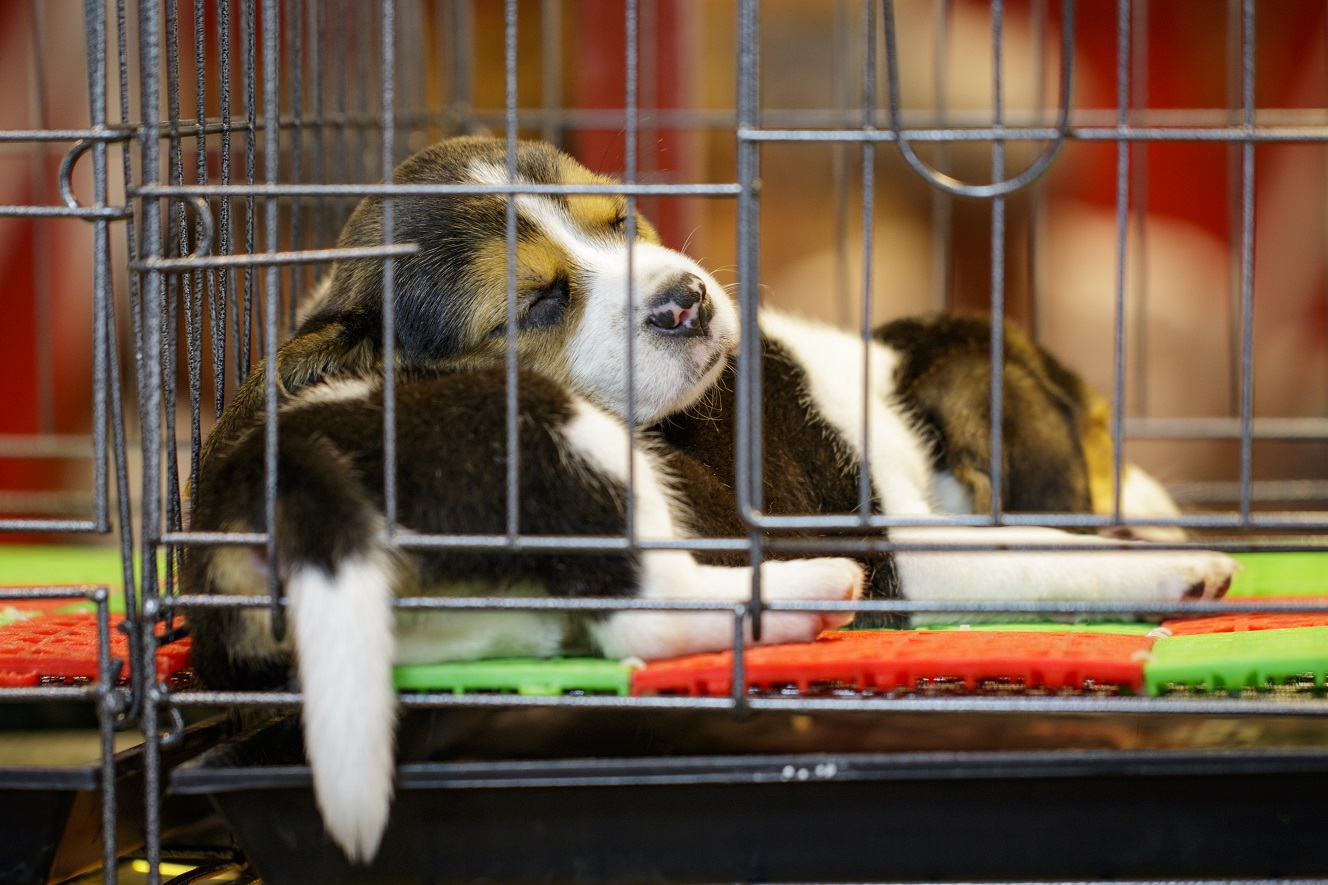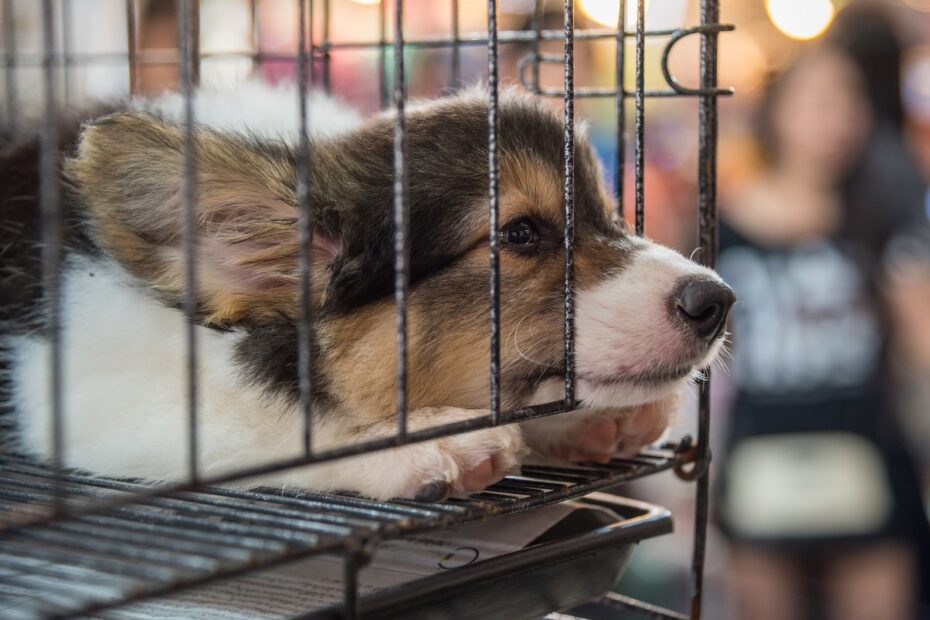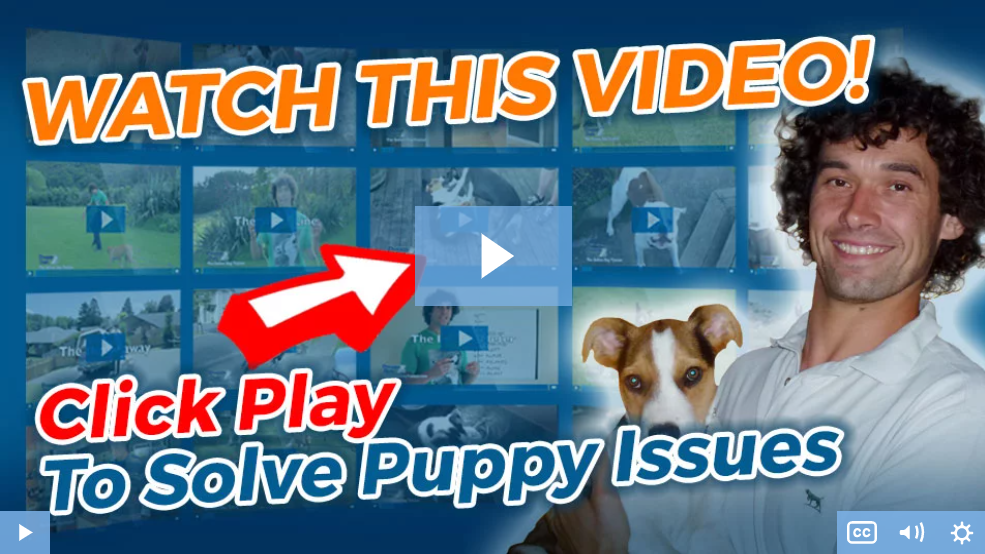If your puppy freaks out in the crate, then I know how you feel, as do thousands of other puppy owners dealing with the exact same issue.
Crates are supposed to be useful, right. I mean, what better way to let your puppy relax than to give them their own little private sanctuary to retreat to when they need a little chill time.
Not only that, but the crate can also be a complete gamechanger when it comes to potty training your little bundle of fluff. Not to mention the fact that it gives you a much-needed break from all the fun and excitement that comes with owning a pup.
But what happens when that very same crate is the cause of all your problems?
…And what happens when your seemingly sweet pup goes into meltdown the moment they lay eyes on the crate?
Well, fret not because while a puppy freaking out in the crate isn’t exactly ideal, it’s also a behavior that can be overcome when given the right guidance.
So in today’s blog post, I’m going to be taking you through some of the more common reasons your puppy freaks out in the crate, along with what signs to look out for that indicate your pup is not happy.
We’ll then finish up with a couple of tried and tested techniques to reduce your pup’s anxiety and stress in the crate so that, in time, they’ll eventually learn to love it.
So, without further ado, let’s dive in and take a look at why your puppy might be freaking out during crate. But more importantly, what you can do about it.
(video will open in a new window)
Why does my puppy freak out in the crate?
As with any unusual behavior displayed by your pup, it’s first important that you understand why they’re acting out before you can address the issue accordingly.
And when it comes to crate training, there’s a long list of potential causes for this seemingly odd behavior. All of which can be brought on for entirely different reasons.
So it’s ultimately down to you to do a little detective work to see if you can figure out the root cause of the issue. This way, you’ll be much more prepared to implement an effective plan to address it.
But to save you the potential headache of figuring out everything yourself, here are some of the more common reasons your pup might not be cooperating in the crate.
Fear
There are times when new things can often be exciting to pups. But there are also times when they can be equally as scary.
Unfortunately, the crate can fall into either one of these categories.
And while some pups may take to the crate like a duck to water, others will look upon it as an impenetrable prison from which there is no escape.
If it’s the latter, then it’s safe to say that you’re in for a bumpy ride when it comes to getting your pup to wander inside willingly.
Separation anxiety
It’s no secret that puppies have the potential to bond quickly with others. In fact, it’s probably one of the best things about owning one.
The problem, however, is when this bond becomes a little too strong, it can often lead to attention-seeking behaviors like neediness and severe separation anxiety.
You can usually spot the tell-tale signs of separation anxiety just by observing how your puppy reacts when you let them out of the crate.
For instance, if your puppy goes nuts in the crate and then quickly returns to their old playful self the moment you let them out. Separation likely won’t be the issue.
If, however, your puppy acts genuinely frightened when you leave and then continues to exhibit the same behavior once you let them out. It’s very likely your dealing with a very anxious puppy.
Boredom
Referring to puppies as excitable is probably the understatement of the century.
And although this will generally vary depending on the breed of your pup and the unique personality. It’s fair to say that some can be borderline crazy when left to their own devices.
The point?
Puppies need exercise, mental stimulation, and lots of it. So if you leave them cooped up for too long, they’re gonna let you know about it.
Some may bark incessantly; Some might even resort to tearing everything in the crate apart piece by piece. But a bored puppy isn’t a happy puppy, and you can bet your sweet cheeks they’ll kick up a fuss if they’re not appeased.
They need the bathroom
If you’re not taking your pup out to relieve themselves immediately before locking them up in the crate, now would be the time to start.
As a general rule of thumb, puppies can only hold their bladder for around one hour compared to their age in months.
So, for instance, a 3-month-old puppy will only be able to hold it for a maximum of 3 hours.
Now, puppies (and dogs) will do everything in their power to avoid soiling where they sleep (it’s one of the amazing benefits of crate training).
But ultimately, they can’t hold it forever, so if they have to, they will break that rule and proceed to defile the nice clean blanket you recently laid out for them in the crate.
So if you don’t want to spend a great deal of your washing smelly, pee-stained sheets on a daily basis, do yourself a favor and make sure their bladder is good and empty before putting them in the crate.
Lack of freedom
Being shut in a crate isn’t the nicest experience, that’s for sure. So your pup might be understandably concerned that you’re limiting their freedom by placing them in this metal prison!
This tends to be a common problem among pups who haven’t had their daily dose of exercise. So just be mindful of the fact that they need to be good and tired before shutting the crate door behind them.
It might take a while, but when they come to realize that the crate isn’t a form of punishment, they’ll eventually learn to adapt and calm their behavior.
Related Post: What To Do If Your Puppy Won’t Stop Barking In The Crate

Signs your puppy is freaking out in the crate
As with anything puppy-related, an important part of crate training is monitoring your puppy’s behavior throughout the process.
Not only will this help you understand how things are progressing, but it will give you a heads up if you need to make any changes along the way.
So let’s take a look at some of the important signs you need to be aware of that demonstrate your puppy is freaking out in the crate:
Excessive barking
While the odd yelp or bark is to be expected when introducing your puppy to a crate for the first time, if they spend a considerable amount of time barking excessively, it’s a sign that they’re not happy with the situation.
You need to be careful here though, as intervening too early could do more harm than good.
If your pup’s barking seems to be a little hit and miss and they generally seem alright in the crate. Letting them out could spell trouble as they’ll slowly start to learn that you’ll let them out if they keep at it long enough.
On the other hand, barking due to real fear like separation anxiety is likely to be high-pitched and consistent over a long period of time. It will also be accompanied by the other noticeable signs of fear, as discussed previously.
Shaking
Again, puppies shake when they’re anxious. And if you’ve introduced your pup to the crate, and their excessive barking is accompanied by shaking or trembling. It’s a clear sign that they’re freaking out and aren’t happy with their new surroundings.
If this is the case, make a quick judgment call and get them out of there before any more damage is caused.
Submissive urination
Submissive urination is common in puppies and is ordinarily a reaction to their feelings of anxiety or stress.
If they’ve been barking and shaking inside the crate, and you notice a little wet patch, it’s another sign of their anxiety.
You need to remember that anxiety is an emotion that a lot of puppies can develop at some point or another.
It’s also something that can be managed as long as you’re willing to put the time and effort in with your pup.
But to get it under control quickly, I’d highly recommend taking a look at these 5 step-by-step calming exercises from Dan Abdelnoor over at The Online Dog Trainer. (see video below)
In the video, Dan quickly demonstrates how teaching your pup to be calm and in control of their emotions is the first step to dealing with any type of behavioral issue. No matter how bad it may seem.
Better still, the exercises he talks about take only minutes to implement. And I guarantee that if you use them on a consistent basis, you’ll see a drastic improvement in your pup’s behavior both in and around the crate.
Anyway, here’s the video link to take a look: 5 Step-By-Step Calming Exercises To Make Your Puppy Highly Responsive & Ready For Training…
(video will open in a new window)
How To Stop Your Puppy Freaking Out In The Crate
Understanding why your puppy freaks out in the crate is one thing. But dealing with it is another thing entirely.
So below, I’ve highlighted a number of techniques you can implement to try both relax your pup and get them ready for the crate.
Take a look…
Slowly introduce the crate
In the early days of crate training, it’s unreasonable to expect your puppy to take to it straight away. As we’ve already discussed, crate fear is very real, so you can’t just expect your pup to waltz into the joint and feel right at home.
Like the old saying goes, ‘slow and steady wins the race.’
Even if they don’t go inside for the first few days, that’s fine. The idea here is to make your pup feel as comfortable as possible in the presence of their crate.
So leave the crate open for a while with a comfortable bed inside and a few toys to entice them in.
Let your pup investigate the crate at their own pace without feeling obliged to go inside.
To better the chances of your pup taking a sneak peek inside, you could even leave a trail of treats leading inside so they can begin to associate it with reward.
See, when you normalize the crate, you’re ultimately helping your pup develop more positive associations with the crate.
This, in turn, will show your pup that the crate isn’t something to be feared. And instead, it should be a place of rest and relaxation that they can retreat to whenever they feel the need.
Stay close by when your pup enters
For puppies that show signs of separation anxiety, it’s key to stay close by the first time they go inside.
This can be done by either sitting next to the door of the gate. Or better still, sitting by the side and hand feeding them a treat of two through the bars.
Remember, it’s all about slowly getting your pup familiar and building up their confidence in the crate.
As they become more comfortable, go ahead and shut the crate door to see how they respond.
If all goes well, slowly start to increase the distance between yourself and the crate and monitor your puppy’s reaction as your do.
This is where distractions like chew toys and treats come in handy as well. Because if you can keep your pup entertained while you create a little space. Chances are they’ll be too engrossed in whatever they’re doing to notice.
Once your puppy is comfortable with you being distant from the crate, the next step is to leave the room to see how they react.
Keep it short at first (no more than 30 seconds) and try and turn it into a fun game where your pup is eagerly awaiting your return.
Then slowly try and increase your duration of absents so that your pup is left on their own for longer periods of time.
Again, this is all part of encouraging your puppy to learn that the crate isn’t something to be feared. In time, the repetitiveness of constantly coming in and out of the room will eventually help your pup realize that you’re not going to abandon them.
Make the crate comfortable and fun
If you don’t spend time making the crate comfortable and fun, your puppy won’t be interested in heading inside.
Think about it, if the crate looks uninviting, why would they even consider going inside when there’s the appeal of a nice comfy sofa in front of a warm fire.
So for starters, make sure the crate looks appealing by placing lots of warm, cuddly blankets inside along with some of their favorite toys.
In addition to this, keep in mind to keep the crate in a location that isn’t too hot or too cold. And preferably out of reach of direct sunlight.
If your pup is able to look at the crate as a place in which they can feel relaxed and even enjoy the surroundings, they’re much more likely to mosey on inside.
Teach your pup emotional control
Teaching your puppy to relax and control their emotions is not only important for crate training, but it’s vital for all aspects of their early development. While it’s lots of fun to watch your pup bound around the house in excitement. It’s not helpful when it comes to crate training.
Again, this is something that Dan talks about extensively when he introduces the 5 step-by-step calming exercises.
So if you haven’t had the chance to take a look at these unique exercises, now would be the time.

Wrapping Things Up
While not essential, crate training your pup has its fair share of benefits.
And even though it might seem impossible now. I guarantee that if you put the time in with your pup and implement the above, you’ll see a vast improvement in their attitude towards the crate.
As with all aspects of training, the key is time, patient, and consistency.
And if you can learn to master these simple concepts, but more importantly, stick with them, things will soon take a turn for the better.

